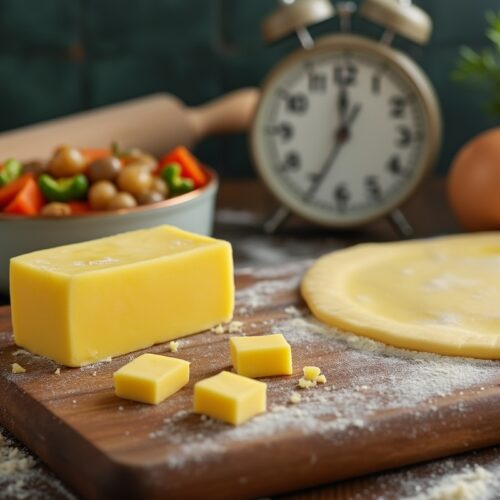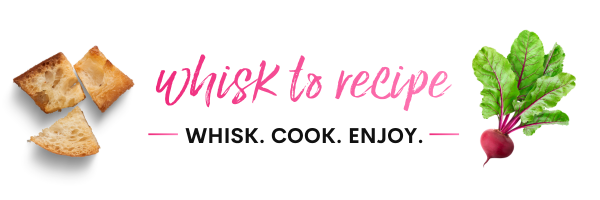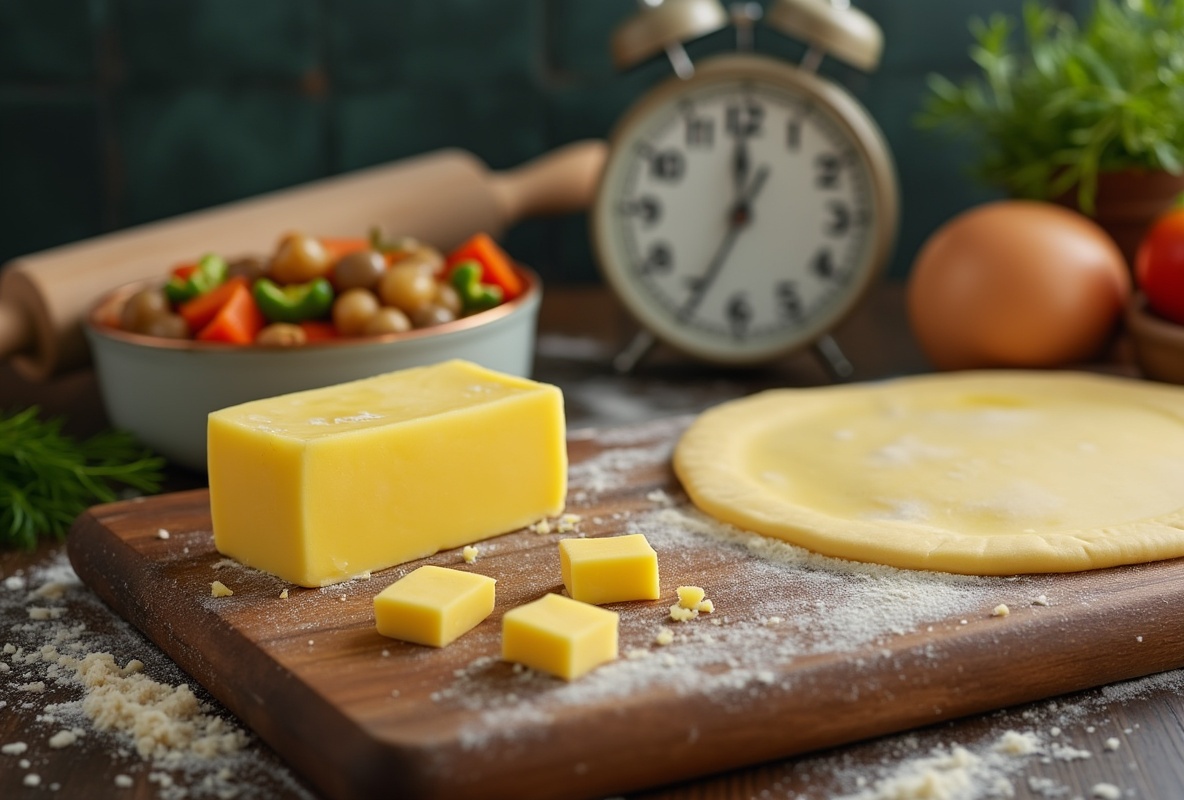Understanding the Need for Vegan Butter Alternatives in Baking
When it comes to creating delicious baked goods without animal products, finding the perfect vegan butter substitute for pie can be a game changer. Many of us are seeking ways to enjoy our favorite desserts while adhering to a plant-based lifestyle. Because traditional butter is a staple in pie-making, it's crucial to understand why vegan alternatives are necessary. They allow us to maintain the flavor and texture we love while ensuring our pies align with our ethical and dietary choices. Let’s explore how these substitutes can transform your baking adventures!
Exploring the Best Plant-Based Fats for Your Pies
When it comes to baking a scrumptious vegan pot pie, choosing the right plant-based fats is crucial. Each option can impart unique textures and flavors, making your pie a memorable treat. One favorite of mine is coconut oil; its solid state at room temperature mimics butter's texture quite well, and it infuses your crust with a subtle tropical aroma. However, if you're opting for something more neutral, try vegetable shortening. It has a high fat content that contributes to a dreamy, flaky crust without overshadowing the filling's flavors.
For those who love experimental baking, you might want to consider using avocado oil. It's rich in monounsaturated fats, making it a healthier choice without compromising on the richness. Some bakers even blend oils, combining the robust taste of olive oil with the mildness of canola to create a unique crust profile. Remember, balancing moisture and fat is key to achieving that perfect flaky pastry for your beloved vegan pot pie. Don't be afraid to explore and find the combination that best suits your taste buds and pairs well with your pie filling!
Delicious Vegan Butter Substitute for Pie: An Easy Recipe
Creating a delicious Vegan Pot Pie starts with the right butter substitute, essential for a flaky crust and rich filling. One simple yet effective option is a homemade vegan butter that combines ingredients like coconut oil, olive oil, and unsweetened applesauce. Not only does this blend provide a balance of moisture and fat, but it also helps achieve that coveted tender texture we all love in pies. Coconut oil provides structure, while olive oil adds a subtle, savory depth that complements many savory fillings. The unsweetened applesauce contributes moisture without altering the taste. This mix can be seamlessly incorporated into any pie recipe, ensuring it remains entirely plant-based and full of flavor. Here’s how you can prepare this step by step.

Vegan Pot Pie
Equipment
- Large skillet
- Mixing bowl
- Whisk
- 9-inch pie dish
- Rolling Pin
- Pastry brush
- Knife
- Chopping board
Ingredients
- 2 tbsp olive oil
- 1 yellow onion diced
- 2 carrots diced
- 2 stalks celery sliced
- 3 cloves garlic minced
- 1 cup frozen peas
- 1 cup frozen corn
- 1/4 cup all-purpose flour
- 2 cups vegetable broth
- 1 cup unsweetened plant-based milk
- 1 tsp dried thyme
- 1 tsp dried rosemary
- 1 tsp salt or to taste
- 1/2 tsp black pepper or to taste
- 1 sheet vegan puff pastry thawed
Instructions
- Heat olive oil in a large skillet over medium heat.
- Add diced onion, carrots, and celery to the skillet. Sauté for 5-7 minutes until the vegetables soften.
- Stir in minced garlic and cook for 1-2 minutes until fragrant.
- Sprinkle flour over the vegetables and stir to coat. Cook for 1-2 minutes until the flour is slightly browned.
- Gradually whisk in the vegetable broth and plant-based milk, ensuring there are no lumps.
- Add peas, corn, dried thyme, dried rosemary, salt, and black pepper to the skillet. Stir well and bring to a simmer, cooking until the mixture thickens, about 5 minutes.
- Pour the vegetable filling into a 9-inch pie dish.
- Roll out the vegan puff pastry and place it over the pie dish. Trim any excess pastry and crimp the edges to seal.
- Cut a few small slits in the pastry to allow steam to escape.
- Bake the pot pie in the preheated oven for 30-35 minutes, or until the crust is golden brown.
- Let the pot pie cool for 5-10 minutes before serving.
Notes
Comparing Different Vegan Spreads and Their Pie-Making Qualities
As someone who loves crafting a delicious vegan pot pie, I've discovered that not all vegan spreads are created equal when it comes to baking. The difference each one can make in pie-making is intriguing. For instance, coconut oil is a popular choice for its solid state at room temperature, providing that much-sought-after flakiness in crusts. But beware, it can add a hint of coconut flavor, which might not suit every recipe. On the other hand, margarine and vegan butter spreads often replicate the creamy texture of traditional butter, making them ideal for most pie crusts. They typically have a neutral taste, letting the filling shine through without overwhelming your senses. If you're looking for a healthier option, consider using avocado oil; it's rich in healthy fats but lacks the solid consistency needed for conventional flaky crusts, so you might need to mix it with other ingredients. Each spread has its unique properties, so it's all about experimenting to find the perfect balance for your vegan pot pie masterpieces!
Tips for Perfectly Balancing Flavors with Vegan Pie Ingredients
When it comes to crafting the ideal vegan pot pie, balancing flavors is crucial. One key aspect is layering flavors. Start with aromatic ingredients like onions, garlic, and herbs. They form a robust base, infusing rich undertones. Next, consider the umami factor. Adding a dash of soy sauce or miso can enhance depth. Don't overlook herbs and spices. Rosemary, thyme, or a sprinkle of paprika can provide delightful contrasts that elevate the entire dish.
Sweetness can be a surprising ally. A pinch of sugar or a touch of maple syrup can round out the savory components, highlighting the vegetables' natural sweetness. For creaminess, coconut milk or cashew cream works wonders, adding a velvety texture.
Lastly, always taste as you go. Adjust salt, acidity, and sweetness incrementally. Each tweak makes your Vegan Pot Pie perfectly balanced, catering to both subtle and bold taste preferences. Remember, a well-balanced vegan pie is more than just flavors—it's a symphony on a plate!
How to Achieve a Flaky Pie Crust without Traditional Butter
Creating that perfect flaky pie crust for your vegan pot pie is like crafting a piece of art. The secret? Finding the right balance of ingredients and technique. Instead of traditional butter, select high-fat plant-based substitutes like coconut oil, which brings a subtle richness and firmness. But here's the trick—you must keep the fats cold. When mixed with flour, cold fats create pockets of steam in the baking process, leading to that delightful flakiness we all crave. It’s equally essential to handle the dough gently and avoid over-kneading. Use chilled water and mix until just combined. Try incorporating a little bit of apple cider vinegar or lemon juice to enhance the crust's texture. Lastly, let your dough rest for at least 30 minutes in the fridge before rolling it out. By doing this, you'll allow the gluten to relax, which helps achieve that perfect flakiness. With these tips, your vegan pot pie won't just look impressive—it'll taste heavenly too!
Common Mistakes When Using Vegan Substitutes in Baking
Switching to vegan substitutes in your baking can be a rewarding adventure, especially when making a tasty vegan pot pie. But, it's easy to make a few common mistakes. First, one trap is not accounting for moisture content. Vegan butters and oils can have varying amounts of water compared to traditional butter. This can affect the texture of your dough, making it either too dry or overly sticky. To avoid this, be sure to adjust other liquid ingredients accordingly.
Another mistake I often see is over-mixing the dough. With vegan ingredients, there's a higher risk of ending up with a tough pie crust because of the different fat structures. Mix just until your ingredients come together. Furthermore, it’s crucial to not overlook the importance of temperature. Vegan fats tend to be softer at room temperature, which can make them harder to work with when trying to achieve that perfect flaky crust. Keep your fats chilled, and, when possible, chill your dough before rolling it out. Be patient, experiment, and you'll soon find that perfect balance for your vegan culinary delights.
Frequently Asked Questions
What are the best plant-based fats for making pie crusts?
When searching for alternatives to traditional butter, consider options like coconut oil, vegan margarine, or vegetable shortening. These fats provide the necessary structure for a crust while adding their unique flavors. You may find one blends better with your preferred pie filling, such as the richness of coconut oil complementing a vegan pot pie.
Will using a vegan butter substitute affect the texture of my pie?
Yes, using vegan substitutes can slightly alter the texture of your pie. Traditional butter contributes to the flakiness and richness, while vegan substitutes like margarine or coconut oil might produce a slightly different texture. Experimenting with different types and brands can help you achieve the perfect balance for your vegan pot pie.
Can I use olive oil as a butter substitute in pies?
While olive oil can be used, it's not usually recommended for pie crusts because it doesn’t solidify when chilled, resulting in a less flaky crust. However, it can add a unique flavor to the filling of your vegan pot pie if you're open to experimenting with flavors.
How do I ensure my vegan pie crust is flaky?
To achieve a flaky crust without butter, ensure your chosen fat substitute is cold and don’t overwork the dough. Chilling the dough before rolling it out can help maintain its structure, leading to a wonderfully flaky vegan pot pie crust.
What should I look out for when buying vegan spreads for baking?
Check the ingredients for hydrogenated oils or high salt content, which can affect the healthiness and flavor of your pie. Also, consider the melting point and flavor profile of the spread to match what you need for your vegan pot pie recipe.

